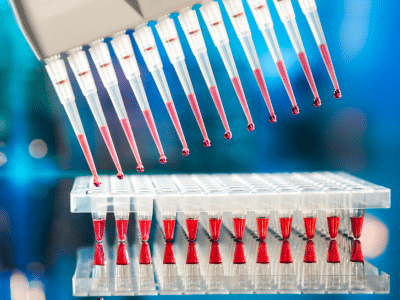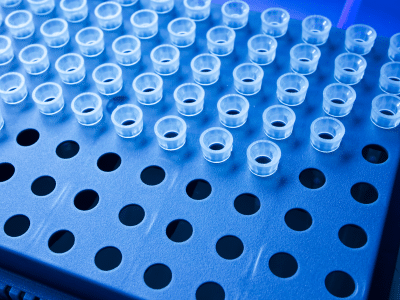The pre-analytic phase is a must have to the succes of the analytics process. Various factors can mess with the results. If you know them you can avoid them.
The pre-analytic phase is a must have to the succes of the analytics process. Various factors can mess with the results. If you know them you can avoid them.
Pre-analytic phase and factors interfering with patient-related results
Many factors of non-compliance are related to the condition of the patient at the time of collection. (non-exhaustive list)
- Patient physiology
- Stress
- Pre or post prandial phase
- Failure to observe the fasting period
- The type of food before the blood sampling
- High-fat foods increase triglyceride
- Consumption of foods high in protein and nucleotides increases urea and uric acid
- Lower concentrations of prealbumin and retinol carrier protein are observed when food is insufficient or during fasting times.
- The patient medication : many medications can create enzymatyc increase
- The consumption of coffee, alcohol or cigarettes
- If the patient has smoked 1 to 5 cigarettes before sampling, the concentration of free fatty acids will be increased after one hour.
- Smoking increases the number of leukocytes, lipoproteins, the activity of certain enzymes and hormones.
- 2 to 4 hours after drinking alcohol, blood sugar drops
- The position of the patient : Moving from a lie down to a standing position decrease the plasma volume.
- The physical activity of the patient before the blood test : Intense physical effort causes urinary elimination of erythrocytes and leukocytes.
- The period : Changes in hormonal balance can cause leukocytosis and increased of blood sugar.
Disturbing factors related to the organization of the laboratory and the technicians
Administrative or organizational errors can have an impact on sample compliance. The incomplete indication of the surname, first name, date of birth on the sampling sheet and the tubes, may lead to incorrect attribution.
Sampling conditions can also generate non-conformities :
- Incorrect collection time. The circadian rhythm has a determining importance on the results. Depending on the analysis to be performed, the time of sampling will have to be adjusted.
| ANALYTE | CONCENTRATION MIN. | CONCENTRATION MAX. |
|---|---|---|
| ACTH | 6 am – 10 am | 12 pm – 4 am |
| Cathécholamines | 9 am – 12 am | 2 am – 5 am |
| Aldostérone | 2 am – 4 am | 12 am – 2 pm |
| Cortisol | 5 am – 8 am | 9 pm – 3 am |
| Phosphate | 2 am – 4 am | 8 am – 12 am |
| Fer | 2 pm – 6 pm | 2 am – 4 am |
| Prolactine | 5 am – 7 am | 10 am – 12 am |
| Rénine | 12 pm – 6 am | 10 am – 12 am |
| Testostérone | 12 pm – 4 am | 8 pm – 12 pm |
| TSH | 8 pm – 2 am | 7 am – 1 pm |
- A tourniquet application should not exceed 1 minute
- The influence of venous stasis in case of too tight tourniquet is important. A potential increase of 20% in the concentration of proteins, lipids, enzymes, bilirubin and serum iron, and an increase of 8% in the concentration of calcium.
- In the same way, a muscular contraction for example due to the pain of the tourniquet can increase the concentrations of calcium and lactic acid.
- The order in which the tubes are filled is important. As a reminder, the recommended order is as follows :
- Dry tube (for serum)
- Citrate tube (for coagulation-vs)
- Hheparinized tube
- EDTA tube (for hematology)
- Fluoride tube (for blood sugar)
- The blood/additive ratio must be respected. the tubes must be filled correctly, with a good blood/anticoagulant volume ratio.
- We have to avoid the samples contamination.
- A poor homogenization of the sample has a negative impact on the result.
Too brutal, it leads to hemolysis. However, hemolysis has multiple consequences, including an increase of the number of intracellular elements in the extracellular fluid (potassium, phosphate, LDH), optical interference of hemoglobin with methods working at the same wavelengths, or interference from intracellular elements with chemical reactions. Insufficient homogenization leads to the formation of micro clots or delayed fibrin.
- Poor centrifugation conditions :
- Non-respect of the minimum time between sampling and the start of centrifugation (not more than 4 hours).
- Too slow centrifugation speed:
- Erythrocytes or thrombocytes can remain in the liquid phase and lyse in it.
- not separated thrombocytes after insufficient centrifugation release potassium, phosphate, LDH, acid phosphate…
- Too fast centrifugation speed can lyse cells
- An inadequate centrifugation temperature is a too often ignored and poorly controlled
- Inadequate temperature has the following consequences:
- Intracellular elements like potassium, phosphate and LDH can be released if the blood is stored at too low temperatures
- There may be interference following the lysis of thrombocytes or granulocytes.
- Exposure to inadequate light can damage the sample
- Poorly managed storage or shipping had a high negative impact on sample quality and resultsPoorly closed tubes can cause :
- Oxygenation of blood components
- Evaporation of water causing a change in concentration
- Inadequate temperature has the following consequences:
Precise instructions to patients and staff are essential to avoid these types of problems. The LABELIANS smart service laboratory is by your side to help you to control hazards and to be sure of metrology and processes.
In the next article, you are going to discover the definition, scope, procedures and operating methods of the pre-analytical phase, the responsibilities of the technician in this phase, various specificities of home sampling, how to identify samples properly and the results.
To secure this pre-analytical phase, the consumables and equipment you use make the difference. LABELIANS is your partner to choose and use them well.




